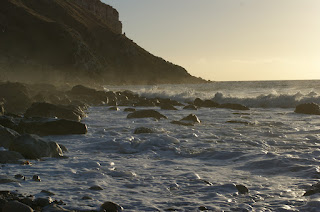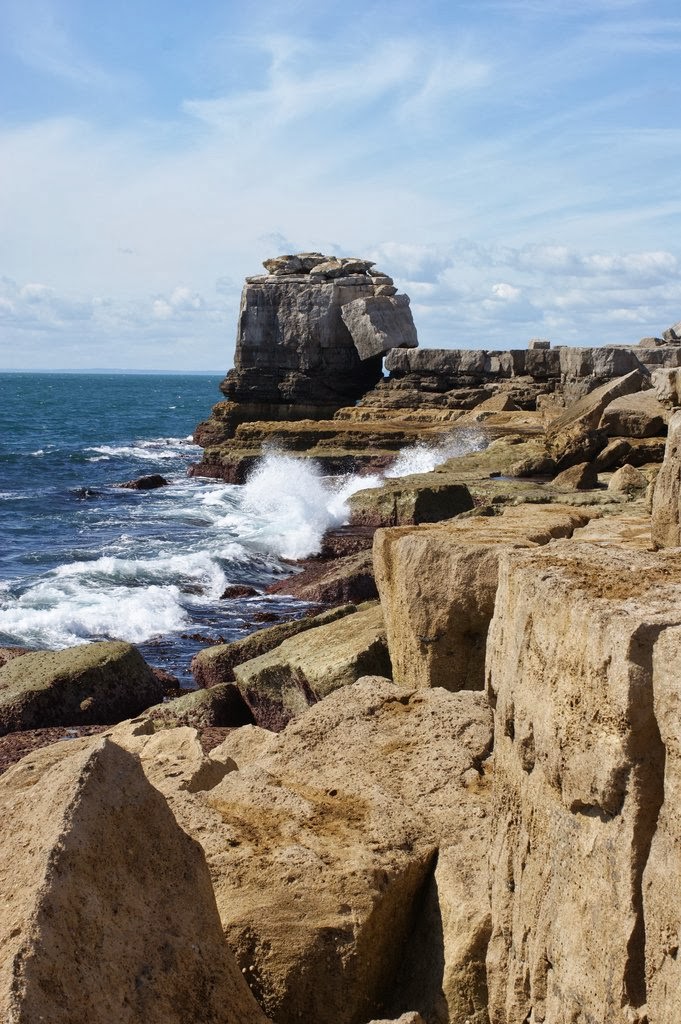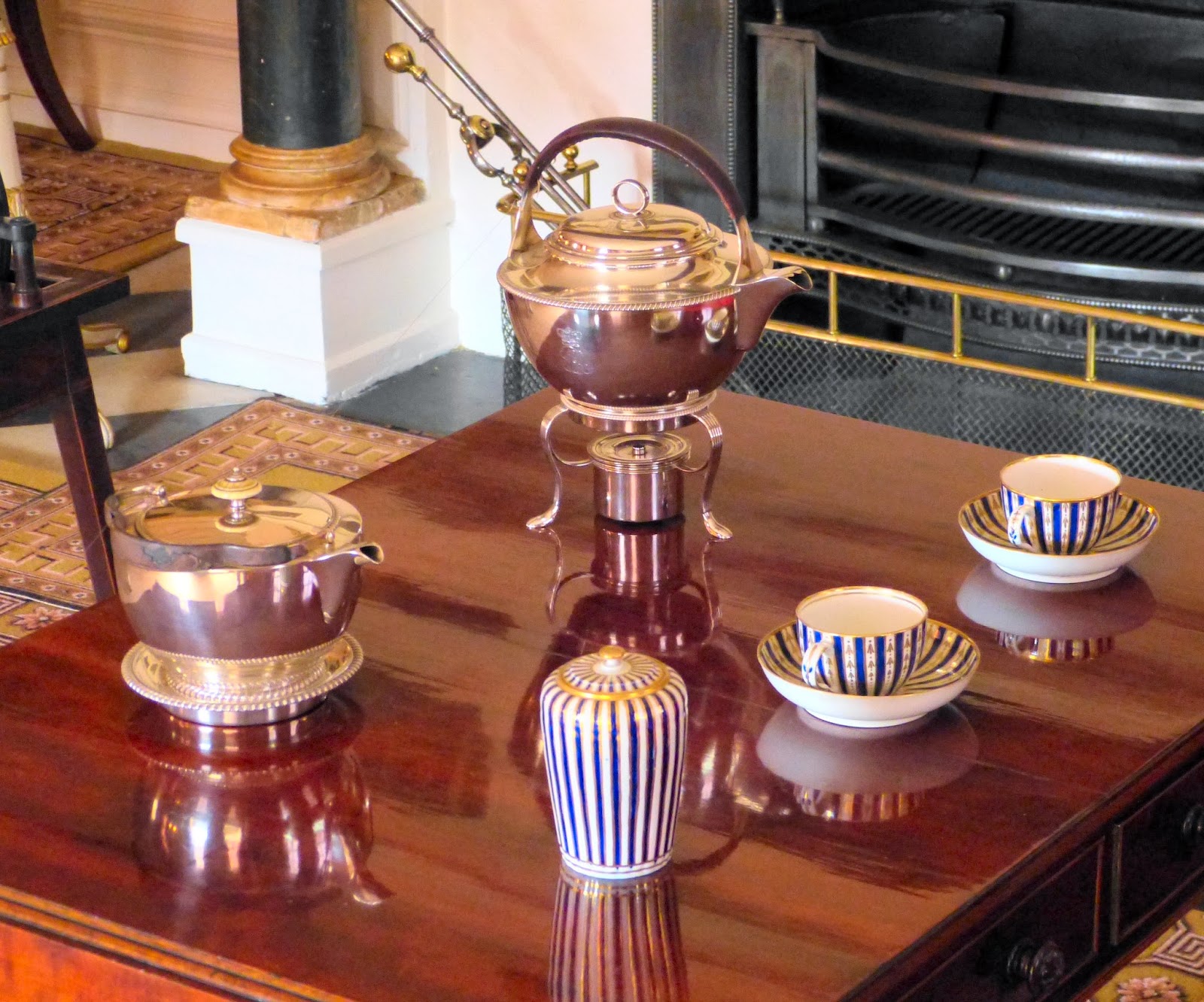 | ||||
| Loss of the Abergavenny, East Indiaman, off the Isle of Portland by R Cobbold and J Tomlinson (Dorset County Council) |
The Earl of Abergavenny was an East Indiaman ship, under the captaincy of John Wordsworth, brother of the poet, William. On 2 February 1805, she sailed in a convoy of ships heading first for India and then on to China. John Wordsworth hoped that it would be the voyage to make his fortune and that of his brother, who would then be able to devote himself to his poetry. The Abergavenny never made it out of British waters.
The Earl of Abergavenny
The Earl of Abergavenny was an East Indiaman ship, a 1200 ton vessel, 176 feet long and 43 feet wide and carrying 30 guns, and manned by a crew of 160 to 200 men. In January 1801, John Wordsworth succeeded his cousin, another John Wordsworth, as captain of the ship.
Captains could make their fortunes by carrying passengers and private cargo whilst publicly acting for the East India Company. Larger vessels, like the Abergavenny, were normally given the direct route to China, but for this voyage, influential friends, in particular William Wilberforce, secured Wordsworth the more profitable route via Bengal.
A valuable opportunity
This route offered threefold trading – selling goods to the British community living in India, buying opium in Bengal to sell in China and purchasing tea in China for the English market. There was little knowledge of the ill effects of opium addiction in Britain at the time and although the very profitable opium trade was banned, smuggling was very common and Wordsworth, like many others, took a lax view on it.
By investing family money in this profitable trade, Wordsworth hoped to make his fortune. According to the ship’s manifest, the cargo of the Abergavenny on its final voyage was estimated to be worth around £90,000, including chests of silver dollars worth £70,000 to buy goods in both Bengal and China.
The Earl of Abergavenny
The Earl of Abergavenny was an East Indiaman ship, a 1200 ton vessel, 176 feet long and 43 feet wide and carrying 30 guns, and manned by a crew of 160 to 200 men. In January 1801, John Wordsworth succeeded his cousin, another John Wordsworth, as captain of the ship.
Captains could make their fortunes by carrying passengers and private cargo whilst publicly acting for the East India Company. Larger vessels, like the Abergavenny, were normally given the direct route to China, but for this voyage, influential friends, in particular William Wilberforce, secured Wordsworth the more profitable route via Bengal.
A valuable opportunity
This route offered threefold trading – selling goods to the British community living in India, buying opium in Bengal to sell in China and purchasing tea in China for the English market. There was little knowledge of the ill effects of opium addiction in Britain at the time and although the very profitable opium trade was banned, smuggling was very common and Wordsworth, like many others, took a lax view on it.
By investing family money in this profitable trade, Wordsworth hoped to make his fortune. According to the ship’s manifest, the cargo of the Abergavenny on its final voyage was estimated to be worth around £90,000, including chests of silver dollars worth £70,000 to buy goods in both Bengal and China.
The Abergavenny travelled in a convoy of East Indiamen from Gravesend to Portsmouth, arriving on 23 January 1805. When the convoy was in the Downs, a heavy gale caused it to collide with another East Indiaman, the Warren Hastings, which had dragged her anchor in the gale. The Abergavenny got off lightly, but the Warren Hastings suffered £2000 damage and the repairs caused her to miss the convoy.
The convoy
In Portsmouth, the Abergavenny took on board 108 of the Company’s troops and a number of the King’s troops, and, after uncertain weather, the convoy moved out to Spithead on the 30 January. The convoy included four other East Indiamen, the Royal George, the Henry Addington, the Wexford and the Bombay Castle, and two whalers, and was escorted by HMS Weymouth, a 44 gun frigate commanded by Captain Draper, commodore of the convoy.
They set sail on 1 February, but a further collision between the Henry Addington and HMS Weymouth caused yet more delay, and it was not until the 2 February that the convoy finally sailed through the Needles Channel. Despite the collisions already endured, the ships were under strict instructions to keep together in convoy.
What happened to HMS Weymouth?
HMS Weymouth led the convoy on a south-westerly course from the Needles Rocks, but at some point lost sight of the convoy. She burnt a blue light all night but failed to find them. Mistakenly believing the convoy to be ahead of her, the Weymouth sailed on west, eventually deciding to sail out into the Atlantic, presumably in the belief that the convoy was still ahead of her.
In reality, the convoy had spent 24 hours tacking off the Needles whilst the Weymouth sailed past them. Eventually the convoy gave up waiting for her and headed westwards, rounding Portland Bill and heading for Lyme Bay against the wind.
Latecomers
Here, Samuel Baggot, the first mate, Joseph Wordsworth, the third mate and a son of the older John Wordsworth, a Company cadet and Ensign Whitlow of the 22nd Foot, who had missed the boat in Portsmouth, succeeded in catching up with them, by means of an open boat that they had hired at an extortionate rate.
The convoy
In Portsmouth, the Abergavenny took on board 108 of the Company’s troops and a number of the King’s troops, and, after uncertain weather, the convoy moved out to Spithead on the 30 January. The convoy included four other East Indiamen, the Royal George, the Henry Addington, the Wexford and the Bombay Castle, and two whalers, and was escorted by HMS Weymouth, a 44 gun frigate commanded by Captain Draper, commodore of the convoy.
They set sail on 1 February, but a further collision between the Henry Addington and HMS Weymouth caused yet more delay, and it was not until the 2 February that the convoy finally sailed through the Needles Channel. Despite the collisions already endured, the ships were under strict instructions to keep together in convoy.
What happened to HMS Weymouth?
HMS Weymouth led the convoy on a south-westerly course from the Needles Rocks, but at some point lost sight of the convoy. She burnt a blue light all night but failed to find them. Mistakenly believing the convoy to be ahead of her, the Weymouth sailed on west, eventually deciding to sail out into the Atlantic, presumably in the belief that the convoy was still ahead of her.
In reality, the convoy had spent 24 hours tacking off the Needles whilst the Weymouth sailed past them. Eventually the convoy gave up waiting for her and headed westwards, rounding Portland Bill and heading for Lyme Bay against the wind.
Latecomers
Here, Samuel Baggot, the first mate, Joseph Wordsworth, the third mate and a son of the older John Wordsworth, a Company cadet and Ensign Whitlow of the 22nd Foot, who had missed the boat in Portsmouth, succeeded in catching up with them, by means of an open boat that they had hired at an extortionate rate.
Back to Portland Roads
 |
| The coast off Portland (2012) |
When the convoy was about 12 leagues to the west of Portland, Captain Clarke of the Wexford, who had taken charge of the convoy after losing contact with HMS Weymouth, decided that it was best to return to Portland Roads and wait for better weather. Accordingly, the convoy set off eastward, and about two leagues west of Portland, the ships picked up pilots to navigate them round Portland Bill.
The Abergavenny was the sternmost ship of the convoy and did not pick up its pilot until about 3pm in the afternoon. Despite, supposedly, being a local man, the pilot “did not seem well acquainted with the coast.” In fading light, the ship sailed south past Chesil Beach and the barren cliffs of Portland Island and carried on southwards out to sea.
The Shambles
Two miles out to sea to the south east of Portland Bill lies a shoal of coarse sand, shingle and crushed shells called the Shambles. It measures nearly 3 miles long and in the centre, is only 11 feet below the surface at low water. The pilot sought to avoid the Shambles, but failed to give the shoal a wide enough berth. When the fierce wind suddenly died away, the strong tide set the ship against the breakers and she was driven head on onto the Shambles about 5pm on 5 February.
The Abergavenny was the sternmost ship of the convoy and did not pick up its pilot until about 3pm in the afternoon. Despite, supposedly, being a local man, the pilot “did not seem well acquainted with the coast.” In fading light, the ship sailed south past Chesil Beach and the barren cliffs of Portland Island and carried on southwards out to sea.
The Shambles
Two miles out to sea to the south east of Portland Bill lies a shoal of coarse sand, shingle and crushed shells called the Shambles. It measures nearly 3 miles long and in the centre, is only 11 feet below the surface at low water. The pilot sought to avoid the Shambles, but failed to give the shoal a wide enough berth. When the fierce wind suddenly died away, the strong tide set the ship against the breakers and she was driven head on onto the Shambles about 5pm on 5 February.
 |
| Rocks on the coast of Portland (2012) |
When the ship became grounded, Captain Wordsworth was appalled. He realised that the damage to his ship would prevent her from joining the convoy and therefore he would lose out on the profitable trading he had depended upon to make his fortune. He cried out in despair: “Oh pilot! Pilot! You have ruined me!”
But it was more than financial ruin that Wordsworth was to face; it was the loss of his ship and the lives of 260 of its passengers, including his own.
But it was more than financial ruin that Wordsworth was to face; it was the loss of his ship and the lives of 260 of its passengers, including his own.
Read more about the ship's fate in The wreck of the Earl of Abergavenny
Rachel Knowles writes clean/Christian Regency era romance and historical non-fiction. She has been sharing her research on this blog since 2011. Rachel lives in the beautiful Georgian seaside town of Weymouth, Dorset, on the south coast of England, with her husband, Andrew.
Find out more about Rachel's books and sign up for her newsletter here.If you have enjoyed this blog and want to encourage me and help me to keep making my research freely available, please buy me a virtual cup of coffee by clicking the button below.
Sources used include:
A gentleman in the East-India House, An Authentic Narrative of the Loss of the Earl of Abergavenny East Indiaman (1805)
Boddy, Maureen and West, Jack, Weymouth – an illustrated history (1983)
Chedzoy, Alan, Seaside Sovereign (2003)
Hayter, Alicia, The Wreck of the Abergavenny (2002)
Boddy, Maureen and West, Jack, Weymouth – an illustrated history (1983)
Chedzoy, Alan, Seaside Sovereign (2003)
Hayter, Alicia, The Wreck of the Abergavenny (2002)
Photographs © RegencyHistory



fascinating story - highlights the inherent problems of dead reckoning
ReplyDeleteSuch a tragic waste of life.
DeleteThe pilot was supposed to have taken the landmark of Wyke Church tower as a marker before turning for the shelter of the Portland Roads, but mistakenly used Sandsfoot Castle tower, no longer the marker as the shingle bank had moved Eastwards a decade before. I have a couple of charts showing this in the heritage centre. Regards, Dave Allan
DeleteThanks, Dave. What a dreadful mistake to make. :(
DeleteMy book, Deep Distresses: William Wordsworth, John Wordsworth, Sir George Beaumont, 1800-1808 (Delaware/MacMillan, 2003) includes a great deal on the sinking and the aftermath, including differing "versions of a deep distress." The book title comes from William Wordsworth's "Elegiac Stanzas," inspired by his brother's drowning on the Abergavenny, where he writes that "a deep distress hath humanized my soul." Images of the model ship Abergavenny, a 6' x 6' replica owned by the College of the Holy Cross, Worcester, Massachusetts, USA, will soon be available.
ReplyDelete